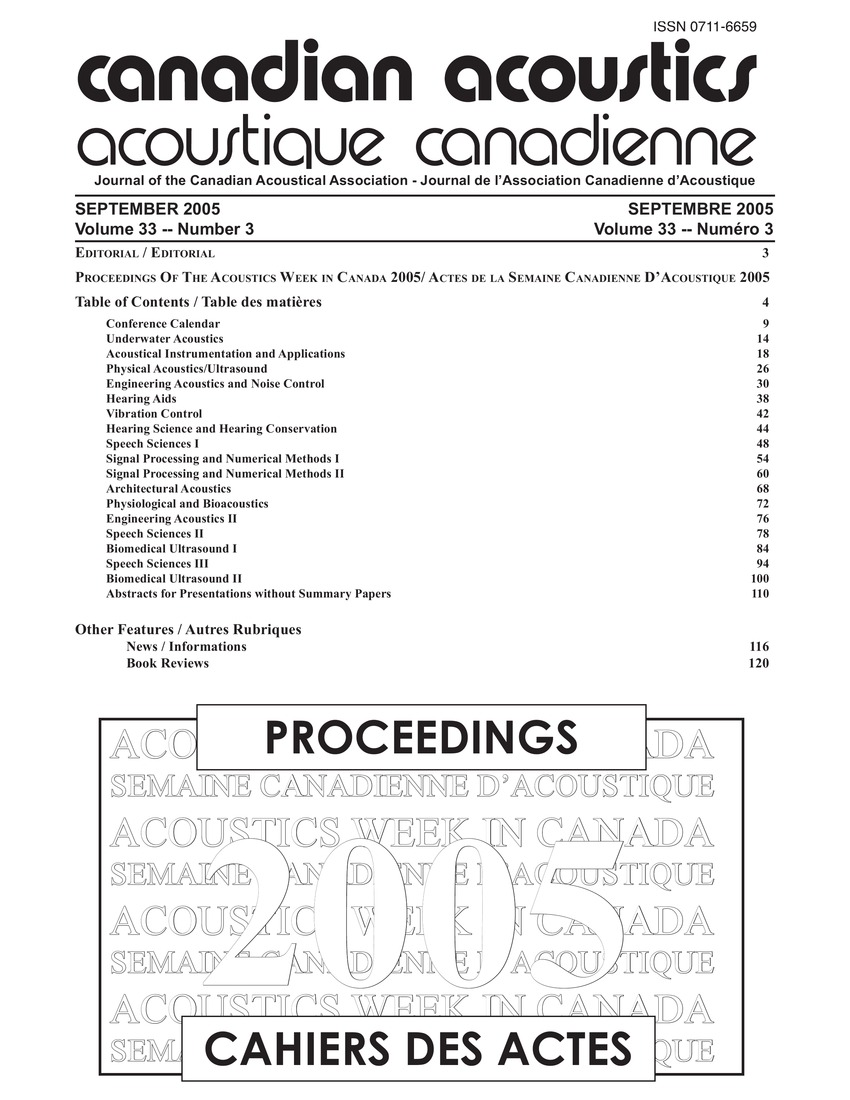Relationship between measures of intelligibility and phonetic accuracy in children with and without cleft palate
Mots-clés :
Audition, Personal computers, Speech, Speech analysis, Stereophonic recordings, Cleft plate, Digital audio files, Phonetic accuracy (PA), Spontaneous speechRésumé
Relationship between the speech intelligibility probe for children with cleft plate (SIP-CCLP) intelligibility scores and intelligibility scores obtained from a spontaneous speech sample for children with and without cleft palates was analyzed. The mean age of the 12 children with cleft palate was 51.2 mos and of the 12 children without cleft palate was 50.1 mos. Audio recording were made into a quiet environment directly to a personal computer as digital audio files. It was found that the phonetic accuracy (PA) scores for the children with cleft palate were significantly lower than those for the children without cleft palate.Fichiers supplémentaires
Publié-e
Comment citer
Numéro
Rubrique
Licence
Author Licensing Addendum
This Licensing Addendum ("Addendum") is entered into between the undersigned Author(s) and Canadian Acoustics journal published by the Canadian Acoustical Association (hereinafter referred to as the "Publisher"). The Author(s) and the Publisher agree as follows:
-
Retained Rights: The Author(s) retain(s) the following rights:
- The right to reproduce, distribute, and publicly display the Work on the Author's personal website or the website of the Author's institution.
- The right to use the Work in the Author's teaching activities and presentations.
- The right to include the Work in a compilation for the Author's personal use, not for sale.
-
Grant of License: The Author(s) grant(s) to the Publisher a worldwide exclusive license to publish, reproduce, distribute, and display the Work in Canadian Acoustics and any other formats and media deemed appropriate by the Publisher.
-
Attribution: The Publisher agrees to include proper attribution to the Author(s) in all publications and reproductions of the Work.
-
No Conflict: This Addendum is intended to be in harmony with, and not in conflict with, the terms and conditions of the original agreement entered into between the Author(s) and the Publisher.
-
Copyright Clause: Copyright on articles is held by the Author(s). The corresponding Author has the right to grant on behalf of all Authors and does grant on behalf of all Authors, a worldwide exclusive license to the Publisher and its licensees in perpetuity, in all forms, formats, and media (whether known now or created in the future), including but not limited to the rights to publish, reproduce, distribute, display, store, translate, create adaptations, reprints, include within collections, and create summaries, extracts, and/or abstracts of the Contribution.


